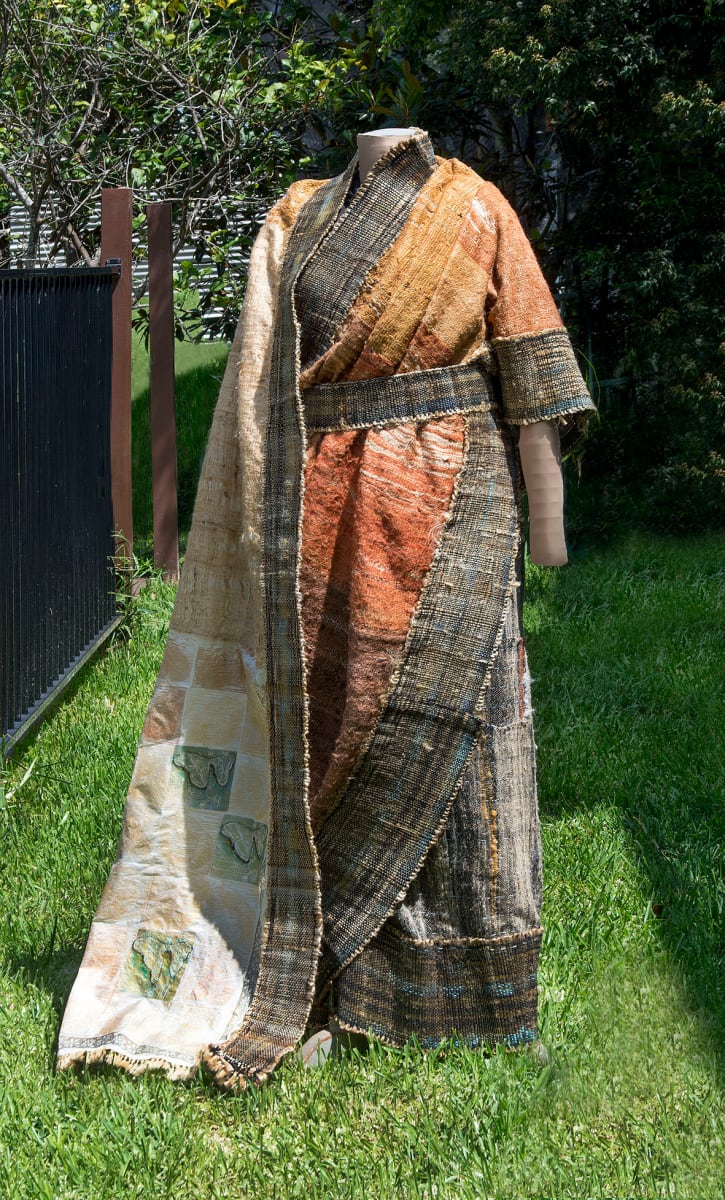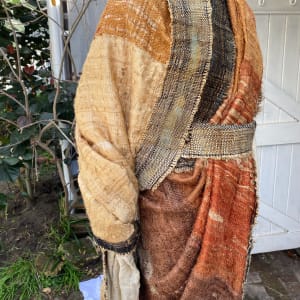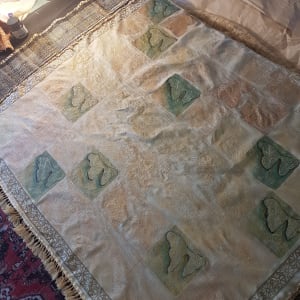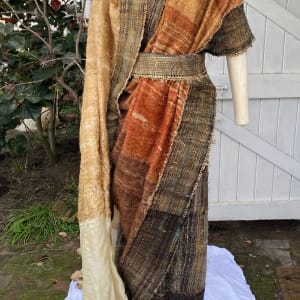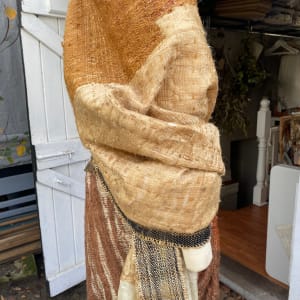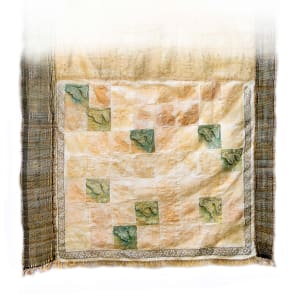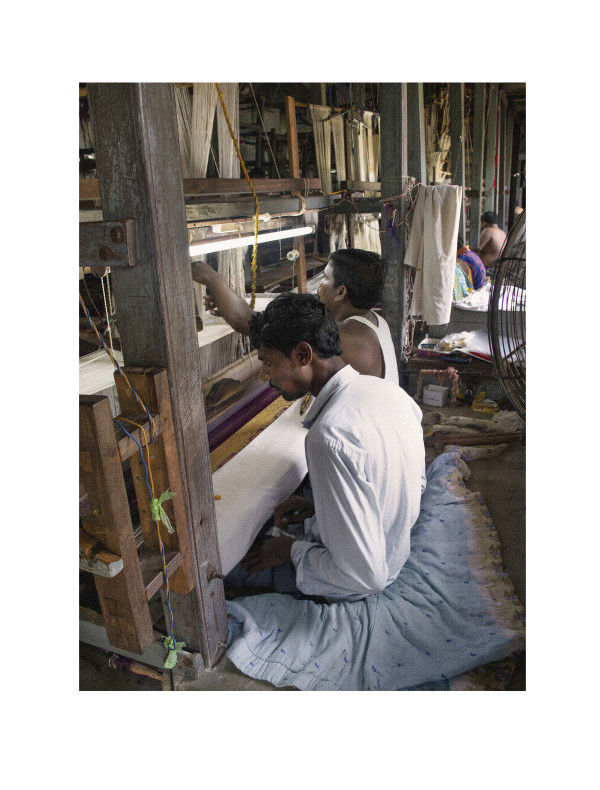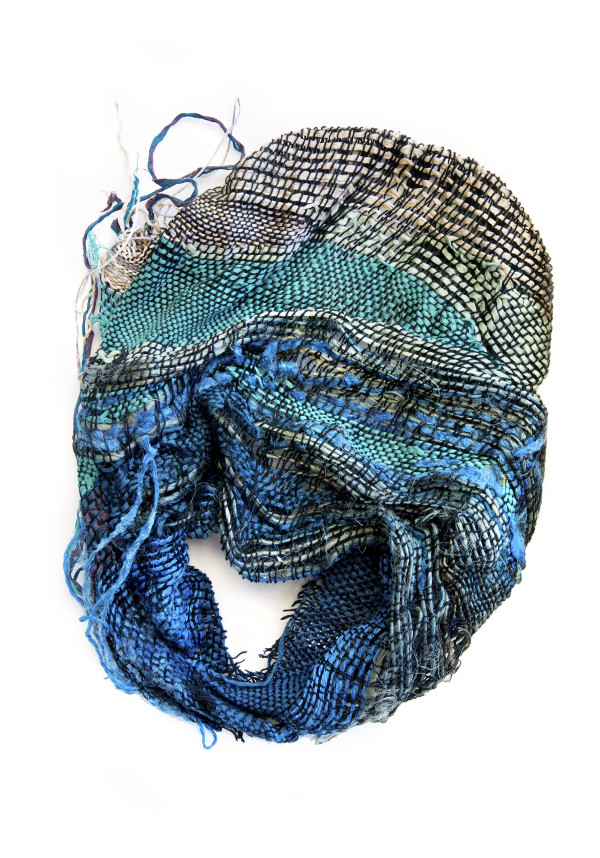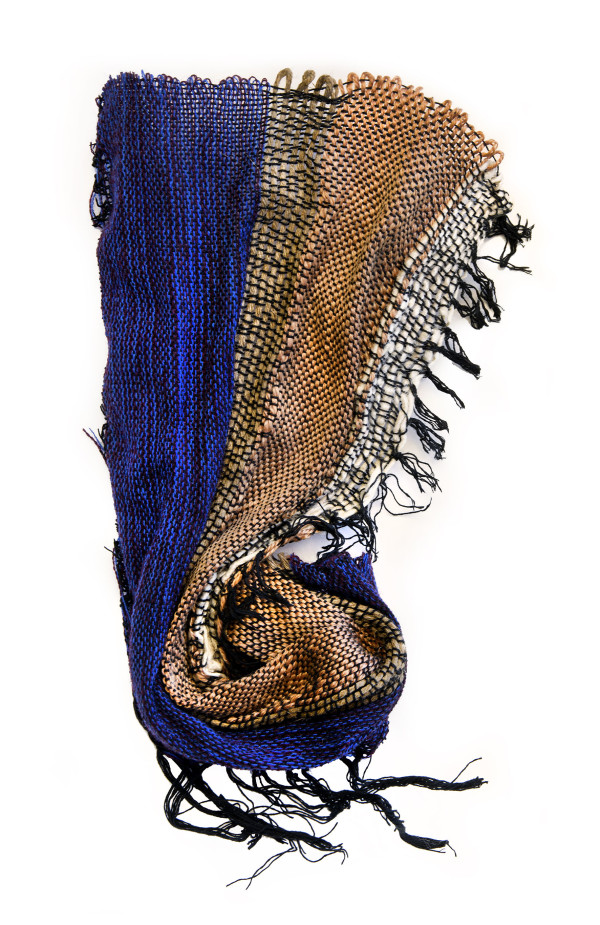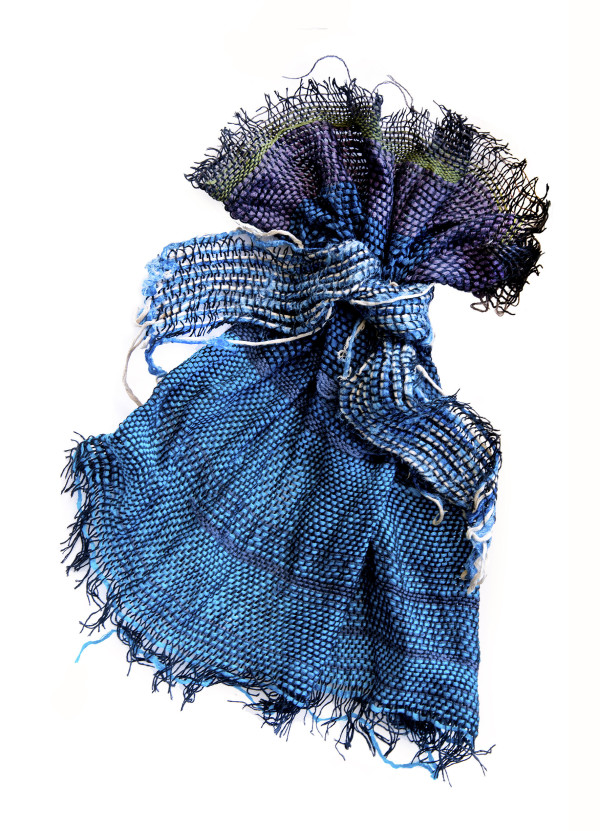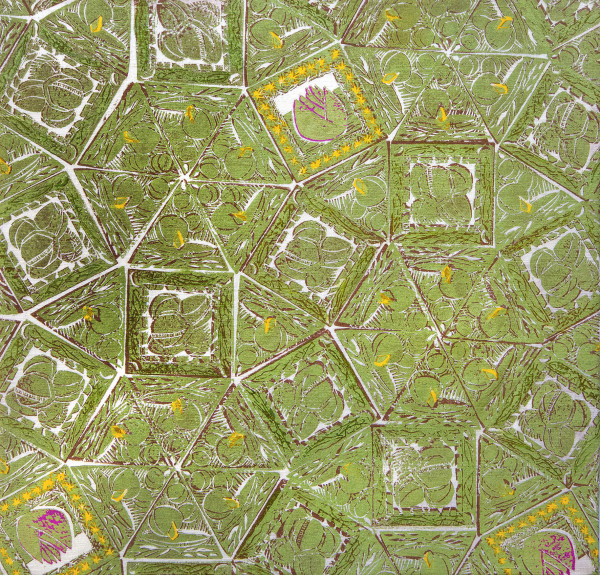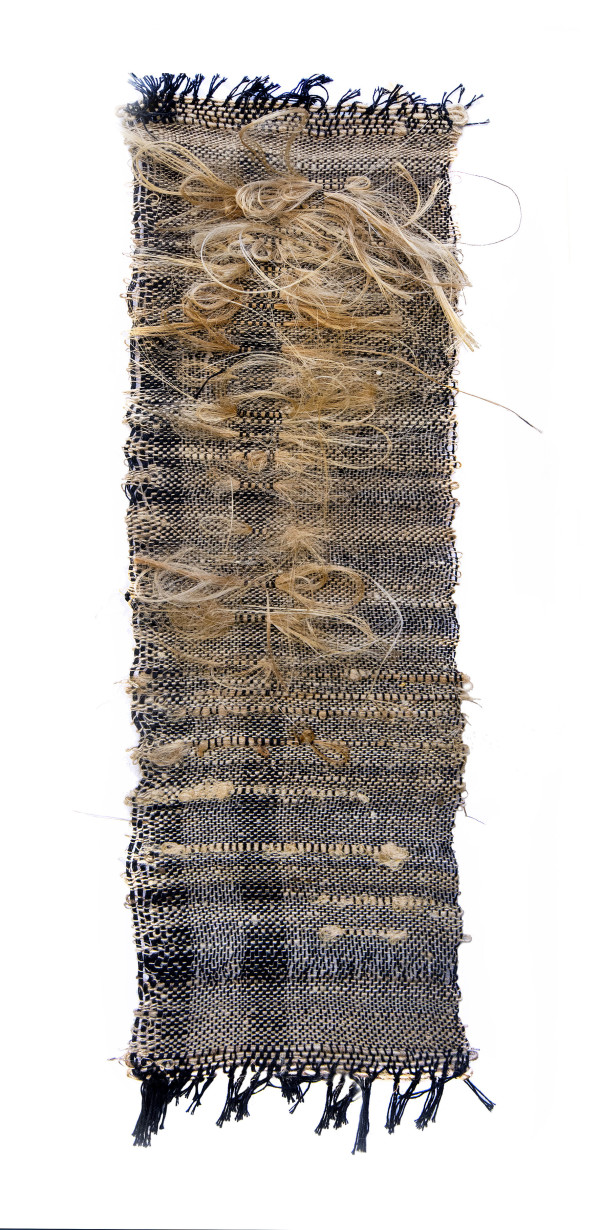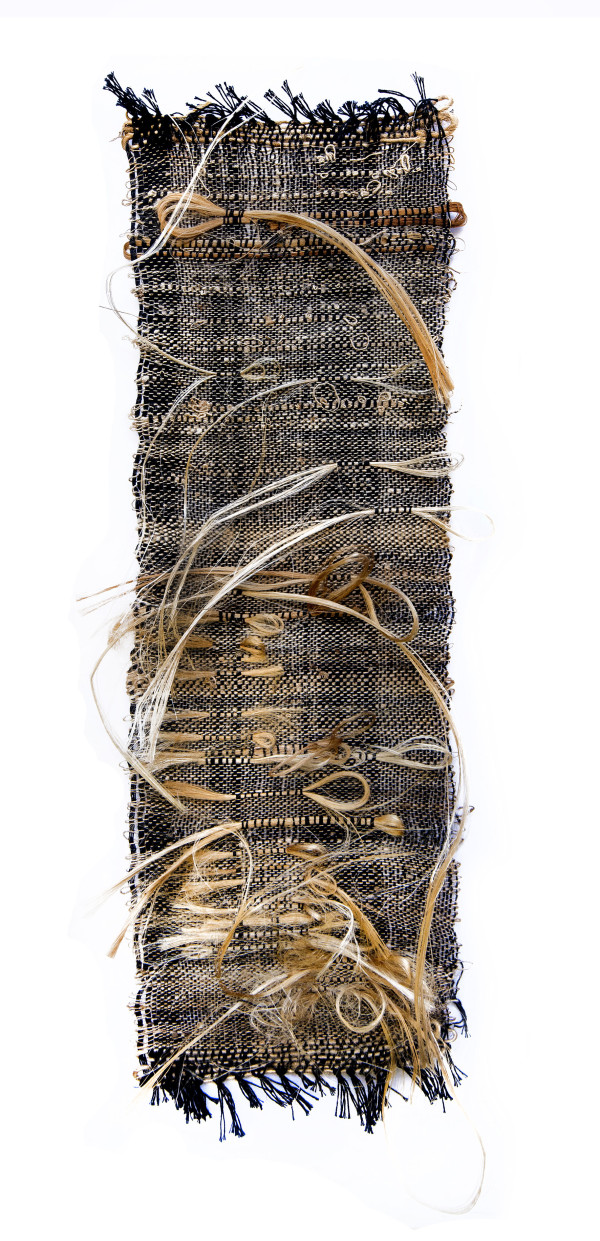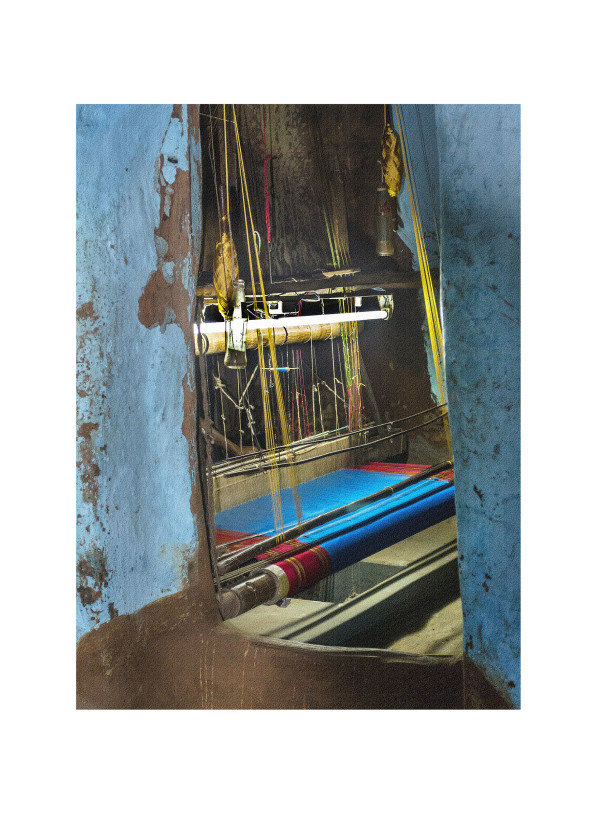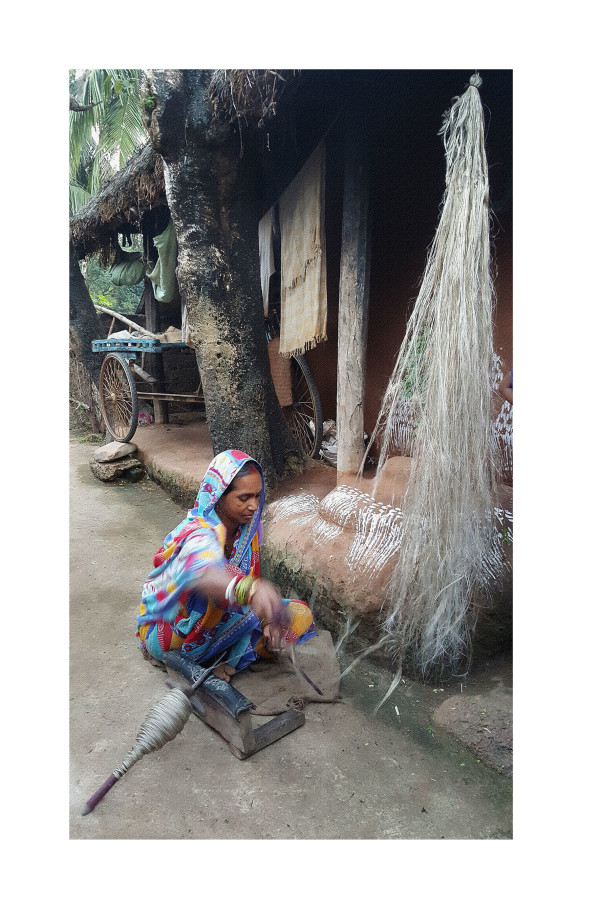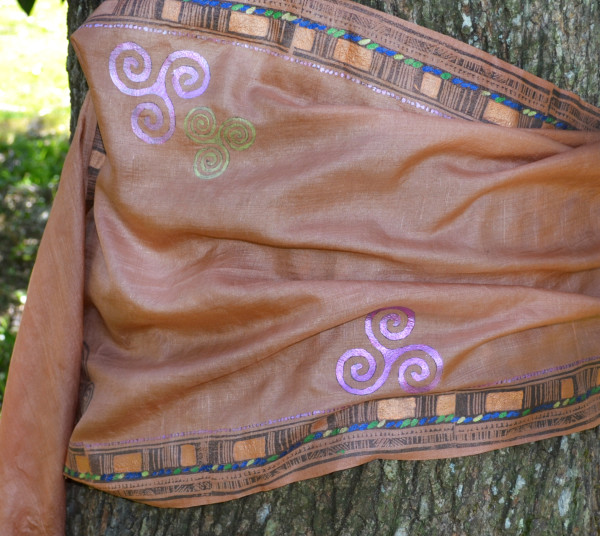This is a collaborative piece between myself and Shelly Tindale. I met Shelly in India and we spent the residency as room mates and creative conspirators. "Sari" represents approximately 500 hours of combined work. Shelly wove pieces in wild tussah silk that had been naturally dyed with eucalyptus. I wove the edging and belt in unspun jute with a black cotton warp. The warp has been painted with metallic textile paint. Shelly backed the piece with wild Tussah Paper silk and Ghicha Wild Tussah silk, stitching them together in the "Boro" tradition.
Sari as a garment is over 5000 years old. Our reinterpretation provides glimpses of textile techniques that have been used for centuries and can be found in cultures around the world, such as boroboro and sashiko in Japan; and Kantha in Odisha, India. A Sari is truly a garment that represents sustainability and the basic life cycle that affects us all. As it ages, and is reused and breakdowns, the sari will return from where it came to feed another cycle of growth and natural fibres.
A sari is typically 5 metres of material, the drape can represent a wearers religion, culture and position in society.
- Subject Matter: Organic weaving and tussah moth motifs
- Current Location: Studio
- Collections: Sari

